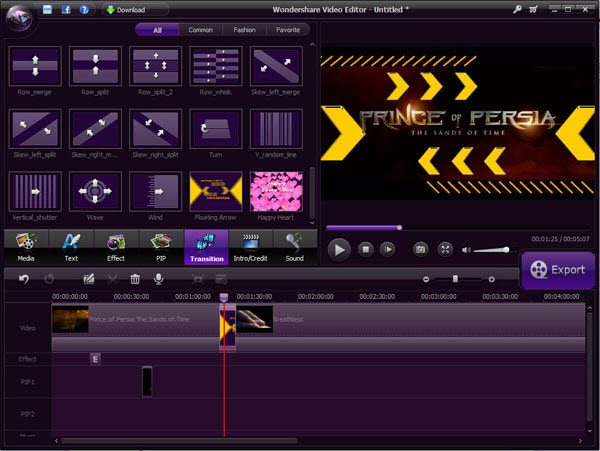Disk Utility User Guide
- Best File System Format For Mac
- Clear System Files On Mac
- System Type X86 Based Pc
- Mac System File Large
- Mac File System On Windows
From the pop-up menu, choose an application that Mac OS X believes will open this document type. (Optional) If you click the Change All button at the bottom of the Open With pane, you make Pixelmator the new default application for all.tif files that would otherwise be opened in Preview.
- FILE SYSTEM The file system in Mac OS X has at its core a set of directories inherited from the Berkeley Software Distribution (BSD) operating system The Mac OS X file system was designed to provide power and flexibility while maintaining the traditional ease-of-use users expect the file system provides users with a consistent structure that makes it clear where resources are located FILE.
- HFS+ Mac OS X's native file system is HFS+ (also known as Mac OS Extended), and it's the only one.
Disk Utility on Mac supports several file system formats:
Best File System Format For Mac


Apple File System (APFS): The file system used by macOS 10.13 or later.
Powerpoint 2008 for mac. Mac OS Extended: The file system used by macOS 10.12 or earlier.
MS-DOS (FAT) and ExFAT: File systems that are compatible with Windows.
Apple File System (APFS)
Apple File System (APFS), the default file system for Mac computers using macOS 10.13 or later, features strong encryption, space sharing, snapshots, fast directory sizing, and improved file system fundamentals. While APFS is optimized for the Flash/SSD storage used in recent Mac computers, it can also be used with older systems with traditional hard disk drives (HDD) and external, direct-attached storage. macOS 10.13 or later supports APFS for both bootable and data volumes.
Clear System Files On Mac
APFS allocates disk space within a container on demand. The disk's free space is shared and can be allocated to any of the individual volumes in the container as needed. If desired, you can specify reserve and quota sizes for each volume. Each volume uses only part of the overall container, so the available space is the total size of the container, minus the size of all the volumes in the container.
Choose one of the following APFS formats for Mac computers using macOS 10.13 or later.
APFS: Uses the APFS format.
APFS (Encrypted): Uses the APFS format and encrypts the volume.
APFS (Case-sensitive): Uses the APFS format and is case-sensitive to file and folder names. For example, folders named 'Homework' and 'HOMEWORK' are two different folders.
APFS (Case-sensitive, Encrypted): Uses the APFS format, is case-sensitive to file and folder names, and encrypts the volume. For example, folders named 'Homework' and 'HOMEWORK' are two different folders.
You can easily add or delete volumes in APFS containers. Each volume within an APFS container can have its own APFS format—APFS, APFS (Encrypted), APFS (Case-sensitive), or APFS (Case-sensitive, Encrypted).

Mac OS Extended
Choose one of the following Mac OS Extended file system formats for compatibility with Mac computers using macOS 10.12 or earlier.
System Type X86 Based Pc
Mac OS Extended (Journaled): Uses the Mac format (Journaled HFS Plus) to protect the integrity of the hierarchical file system.
Mac OS Extended (Journaled, Encrypted): Uses the Mac format, requires a password, and encrypts the partition.
Mac OS Extended (Case-sensitive, Journaled): Uses the Mac format and is case-sensitive to folder names. For example, folders named 'Homework' and 'HOMEWORK' are two different folders.
Mac OS Extended (Case-sensitive, Journaled, Encrypted): Uses the Mac format, is case-sensitive to folder names, requires a password, and encrypts the partition.
Windows-compatible formats
Mac System File Large
Choose one of the following Windows-compatible file system formats if you are formatting a disk to use with Windows.

Disk Utility User Guide
- Best File System Format For Mac
- Clear System Files On Mac
- System Type X86 Based Pc
- Mac System File Large
- Mac File System On Windows
From the pop-up menu, choose an application that Mac OS X believes will open this document type. (Optional) If you click the Change All button at the bottom of the Open With pane, you make Pixelmator the new default application for all.tif files that would otherwise be opened in Preview.
- FILE SYSTEM The file system in Mac OS X has at its core a set of directories inherited from the Berkeley Software Distribution (BSD) operating system The Mac OS X file system was designed to provide power and flexibility while maintaining the traditional ease-of-use users expect the file system provides users with a consistent structure that makes it clear where resources are located FILE.
- HFS+ Mac OS X's native file system is HFS+ (also known as Mac OS Extended), and it's the only one.
Disk Utility on Mac supports several file system formats:
Best File System Format For Mac
Apple File System (APFS): The file system used by macOS 10.13 or later.
Powerpoint 2008 for mac. Mac OS Extended: The file system used by macOS 10.12 or earlier.
MS-DOS (FAT) and ExFAT: File systems that are compatible with Windows.
Apple File System (APFS)
Apple File System (APFS), the default file system for Mac computers using macOS 10.13 or later, features strong encryption, space sharing, snapshots, fast directory sizing, and improved file system fundamentals. While APFS is optimized for the Flash/SSD storage used in recent Mac computers, it can also be used with older systems with traditional hard disk drives (HDD) and external, direct-attached storage. macOS 10.13 or later supports APFS for both bootable and data volumes.
Clear System Files On Mac
APFS allocates disk space within a container on demand. The disk's free space is shared and can be allocated to any of the individual volumes in the container as needed. If desired, you can specify reserve and quota sizes for each volume. Each volume uses only part of the overall container, so the available space is the total size of the container, minus the size of all the volumes in the container.
Choose one of the following APFS formats for Mac computers using macOS 10.13 or later.
APFS: Uses the APFS format.
APFS (Encrypted): Uses the APFS format and encrypts the volume.
APFS (Case-sensitive): Uses the APFS format and is case-sensitive to file and folder names. For example, folders named 'Homework' and 'HOMEWORK' are two different folders.
APFS (Case-sensitive, Encrypted): Uses the APFS format, is case-sensitive to file and folder names, and encrypts the volume. For example, folders named 'Homework' and 'HOMEWORK' are two different folders.
You can easily add or delete volumes in APFS containers. Each volume within an APFS container can have its own APFS format—APFS, APFS (Encrypted), APFS (Case-sensitive), or APFS (Case-sensitive, Encrypted).
Mac OS Extended
Choose one of the following Mac OS Extended file system formats for compatibility with Mac computers using macOS 10.12 or earlier.
System Type X86 Based Pc
Mac OS Extended (Journaled): Uses the Mac format (Journaled HFS Plus) to protect the integrity of the hierarchical file system.
Mac OS Extended (Journaled, Encrypted): Uses the Mac format, requires a password, and encrypts the partition.
Mac OS Extended (Case-sensitive, Journaled): Uses the Mac format and is case-sensitive to folder names. For example, folders named 'Homework' and 'HOMEWORK' are two different folders.
Mac OS Extended (Case-sensitive, Journaled, Encrypted): Uses the Mac format, is case-sensitive to folder names, requires a password, and encrypts the partition.
Windows-compatible formats
Mac System File Large
Choose one of the following Windows-compatible file system formats if you are formatting a disk to use with Windows.
MS-DOS (FAT): Use for Windows volumes that are 32 GB or less.
Edit with Editing boxVideo Studio Express has ample editing features. You can just select the proper part to edit your file based on your needs.3Add transition effectsClick the Transitions tab under the video library and you will find all transition effects. And you can also drag an audio file into the Background audio line to add background music.2. For example, you can cut out the unwanted part in the Crop frame; adjust video brightness, contrast, and saturation in the Effect tab; or rotate the video in a horizontal or vertical way.
ExFAT: Use for Windows volumes that are over 32 GB.
